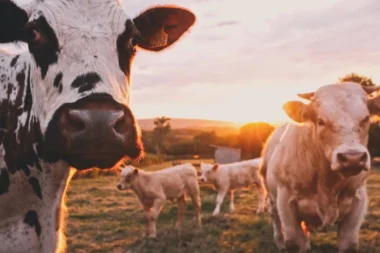Carbon farming is an emerging agricultural practice aimed at sequestering carbon dioxide (CO2) from the atmosphere into the soil and vegetation. This practice not only helps mitigate climate change but also enhances soil health, improves crop yields, and increases farm resilience. In this article, we explore the various practices involved in carbon farming, the policies supporting its adoption, and the challenges and opportunities it presents for sustainable agriculture.
Understanding Carbon Farming
Carbon farming refers to a suite of agricultural techniques designed to capture and store atmospheric carbon in the soil and plants. The primary objective is to reduce the concentration of CO2, a major greenhouse gas (GHG), in the atmosphere. By adopting carbon farming practices, farmers can transform their fields into carbon sinks, which absorb more CO2 than they emit.
Key Carbon Farming Practices
Cover Cropping:
Cover crops, such as clover, rye, and legumes, are planted during off-seasons when main crops are not growing. These plants cover the soil, preventing erosion, enhancing soil structure, and adding organic matter. Cover crops also help fix nitrogen, reducing the need for synthetic fertilizers, which are significant sources of GHG emissions.
No-Till and Reduced Tillage:
Conventional tillage disrupts soil structure, releasing stored carbon into the atmosphere. No-till or reduced tillage methods minimize soil disturbance, preserving soil organic matter and enhancing carbon sequestration. These practices also improve water retention, reduce erosion, and promote beneficial soil microorganisms.
Agroforestry:
Agroforestry integrates trees and shrubs into crop and livestock systems. Trees act as carbon sinks, storing carbon in their biomass and the soil. Additionally, they provide shade, reduce wind erosion, and enhance biodiversity. Examples include alley cropping, silvopasture, and forest farming.
Crop Rotation and Diversification:
Rotating crops and diversifying plant species in the fields improve soil health and fertility. Different crops contribute various types of organic matter to the soil, enhancing its structure and carbon content. Crop diversification also helps break pest and disease cycles, reducing the need for chemical inputs.
Managed Grazing:
Properly managed grazing systems can enhance soil carbon sequestration. Rotational grazing, where livestock are moved between pastures to prevent overgrazing, promotes plant growth and root development. This increases the organic matter in the soil, storing more carbon.
Biochar Application:
Biochar is a stable form of carbon produced by heating organic material in the absence of oxygen (pyrolysis). When applied to soil, biochar enhances soil fertility, retains water, and sequesters carbon for hundreds to thousands of years. It also reduces the need for chemical fertilizers, further lowering GHG emissions.
Composting:
Composting organic waste materials, such as crop residues and animal manure, creates a nutrient-rich soil amendment. Adding compost to fields increases soil organic matter, improves soil structure, and sequesters carbon. Composting also reduces methane emissions from organic waste decomposition in landfills.
Hardware and Software Required for Carbon Farming
Implementing carbon farming practices effectively requires a combination of hardware and software tools to monitor, manage, and enhance agricultural operations. Here’s a comprehensive overview of the essential hardware and software needed for successful carbon farming.
Hardware Requirements
Soil Sensors:
Purpose: Measure soil moisture, temperature, pH, and nutrient levels.
Types: In-ground sensors, portable handheld devices.
Benefits: Provide real-time data on soil health and conditions, enabling precise irrigation and fertilization.
Weather Stations:
Purpose: Monitor local weather conditions such as temperature, humidity, rainfall, and wind speed.
Components: Sensors, data loggers, and communication modules.
Benefits: Help in making informed decisions about planting, irrigation, and pest control.
Drones and UAVs (Unmanned Aerial Vehicles):
Purpose: Aerial imaging and surveying of crop fields.
Capabilities: Equipped with cameras and multispectral sensors.
Benefits: Provide high-resolution images and data for crop health monitoring, mapping, and analysis.
GPS Devices:
Purpose: Provide precise location data for field operations.
Types: Handheld GPS units, GPS-enabled machinery.
Benefits: Enhance precision agriculture techniques, such as variable rate application of inputs.
Automated Irrigation Systems:
Purpose: Manage and optimize water use.
Components: Drip irrigation lines, sprinklers, valves, and controllers.
Benefits: Reduce water waste, improve crop yields, and support soil moisture maintenance.
Composters and Biochar Kilns:
Purpose: Produce compost and biochar from organic waste.
Types: In-vessel composters, biochar kilns.
Benefits: Enhance soil fertility, improve soil structure, and sequester carbon.
No-Till and Reduced Tillage Equipment:
Purpose: Minimize soil disturbance during planting.
Types: No-till drills, strip-till equipment.
Benefits: Preserve soil organic matter, reduce erosion, and improve soil health.
Livestock Management Tools:
Purpose: Manage grazing patterns and livestock health.
Types: Portable fencing, GPS collars, health monitoring devices.
Benefits: Optimize grazing, prevent overgrazing, and enhance pasture productivity.
Software Requirements
Farm Management Software:
Purpose: Manage all aspects of farm operations.
Features: Crop planning, task scheduling, input tracking, financial management.
Benefits: Improve efficiency, streamline operations, and enhance decision-making.
GIS (Geographic Information System) Software:
Purpose: Analyze spatial data and create detailed maps.
Features: Mapping, spatial analysis, data visualization.
Benefits: Optimize land use, monitor crop health, and plan field operations.
Remote Sensing Software:
Purpose: Process and analyze aerial and satellite imagery.
Features: Image processing, vegetation index calculation, change detection.
Benefits: Monitor crop health, detect stress areas, and assess biomass.
Soil Health Monitoring Software:
Purpose: Track and analyze soil data.
Features: Data logging, trend analysis, reporting.
Benefits: Improve soil management practices, optimize input use, and enhance crop yields.
Weather Forecasting Software:
Purpose: Provide accurate and localized weather forecasts.
Features: Real-time updates, historical data analysis, alert systems.
Benefits: Make informed decisions about planting, irrigation, and pest management.
Carbon Accounting Software:
Purpose: Track and report carbon sequestration and emissions.
Features: Carbon footprint calculation, sequestration tracking, compliance reporting.
Benefits: Demonstrate environmental benefits, participate in carbon markets, and meet regulatory requirements.
Precision Agriculture Software:
Purpose: Implement site-specific crop management.
Features: Variable rate application, yield monitoring, field mapping.
Benefits: Optimize input use, increase crop productivity, and reduce environmental impact.
Data Integration Platforms:
Purpose: Integrate data from various sources (sensors, drones, software).
Features: Data aggregation, real-time analytics, dashboard visualization.
Benefits: Provide comprehensive insights, enhance decision-making, and improve farm management.
Implementation Considerations
Compatibility and Integration:
Ensure that hardware and software tools are compatible and can integrate seamlessly. For example, soil sensors should be able to communicate with farm management software for real-time data logging and analysis.
Scalability:
Choose solutions that can scale with the size of the farming operation. This is particularly important for large farms that require extensive monitoring and management.
Training and Support:
Provide training for farm personnel to effectively use new technologies. Ensure access to technical support for troubleshooting and maintenance.
Cost-Benefit Analysis:
Evaluate the cost of hardware and software against the potential benefits in terms of increased yields, reduced inputs, and enhanced carbon sequestration.
Data Security:
Implement robust data security measures to protect sensitive information related to farm operations and carbon sequestration.
Regulatory Compliance:
Ensure that all practices and tools comply with local, national, and international regulations related to agriculture and carbon sequestration.
Policies Supporting Carbon Farming
Effective policies are crucial for the widespread adoption of carbon farming practices. These policies can incentivize farmers, provide technical support, and ensure the environmental integrity of carbon sequestration efforts.
Financial Incentives and Subsidies:
Governments can offer financial incentives, such as grants, subsidies, and tax credits, to encourage farmers to adopt carbon farming practices. These incentives can help offset the initial costs of implementing new techniques and technologies. For instance, the United States Department of Agriculture (USDA) provides funding through programs like the Environmental Quality Incentives Program (EQIP) and the Conservation Stewardship Program (CSP).
Carbon Markets and Trading:
Carbon markets allow farmers to earn credits for the carbon they sequester, which can be sold to companies or organizations looking to offset their emissions. These markets create a financial incentive for carbon farming and help integrate agriculture into the broader climate change mitigation strategy. The California Cap-and-Trade Program is an example where agricultural projects can generate carbon credits.
Technical Assistance and Extension Services:
Providing farmers with technical assistance and extension services is essential for the successful implementation of carbon farming practices. Extension services can offer training, resources, and support to help farmers understand and adopt new techniques. Programs like the USDA’s Sustainable Agriculture Research and Education (SARE) provide valuable resources and training for farmers.
Research and Development:
Investing in research and development (R&D) is critical for advancing carbon farming practices. Governments and institutions can fund research to develop new techniques, improve existing ones, and measure their effectiveness in sequestering carbon. Collaboration between scientists, farmers, and policymakers can drive innovation and improve the sustainability of carbon farming.
Regulatory Frameworks and Standards:
Establishing clear regulatory frameworks and standards ensures the credibility and effectiveness of carbon farming practices. These frameworks can include guidelines for measuring, reporting, and verifying (MRV) carbon sequestration. Standardized protocols help build trust in carbon markets and ensure that carbon credits represent real, additional, and permanent carbon sequestration.
Education and Awareness Campaigns:
Raising awareness about the benefits of carbon farming and educating the public and policymakers is essential for its widespread adoption. Education campaigns can highlight the role of carbon farming in climate change mitigation, food security, and rural development. Engaging stakeholders through workshops, seminars, and media campaigns can foster a supportive environment for carbon farming initiatives.
Integrated Land-Use Policies:
Integrating carbon farming into broader land-use and agricultural policies can enhance its impact. Policies that promote sustainable land management, conservation agriculture, and biodiversity protection can complement carbon farming efforts. Coordinated approaches ensure that carbon farming contributes to multiple environmental and socio-economic goals.
Challenges and Opportunities
While carbon farming offers significant potential for climate change mitigation and sustainable agriculture, it also faces several challenges. Addressing these challenges can unlock opportunities for broader adoption and impact.
Measurement and Verification:
Accurately measuring and verifying carbon sequestration in soils and vegetation is complex and requires robust methodologies. Developing cost-effective and reliable MRV systems is crucial for ensuring the credibility of carbon farming practices and carbon credits.
Economic Viability:
The economic viability of carbon farming practices varies depending on farm size, location, and crop types. Ensuring that carbon farming is financially beneficial for farmers requires targeted incentives, subsidies, and market mechanisms that provide adequate compensation for the additional efforts and costs involved.
Knowledge and Training:
Farmers need access to knowledge, training, and technical support to adopt and implement carbon farming practices effectively. Strengthening extension services and investing in farmer education can help bridge the knowledge gap and promote best practices.
Policy Coordination:
Coordinating policies across different levels of government and sectors is essential for the success of carbon farming. Aligning agricultural, environmental, and climate policies can create a coherent framework that supports and incentivizes carbon farming.
Scalability:
Scaling up carbon farming practices to a level that makes a significant impact on global carbon sequestration is a major challenge. Collaborative efforts among farmers, researchers, policymakers, and the private sector are necessary to develop scalable models and practices.
Long-Term Commitment:
Carbon farming requires long-term commitment and consistency to achieve and maintain its benefits. Policies and incentives must ensure that farmers are motivated to continue carbon farming practices over extended periods.
Carbon farming represents a promising strategy for mitigating climate change, enhancing soil health, and promoting sustainable agriculture. By adopting practices such as cover cropping, no-till farming, agroforestry, and biochar application, farmers can sequester significant amounts of carbon in soils and vegetation.
Supportive policies, including financial incentives, carbon markets, technical assistance, and regulatory frameworks, are essential for encouraging the adoption of carbon farming practices. Addressing challenges related to measurement, economic viability, knowledge dissemination, policy coordination, scalability, and long-term commitment can unlock the full potential of carbon farming.
As the world grapples with the impacts of climate change, carbon farming offers a win-win solution that benefits both the environment and the agricultural community. By transforming farms into carbon sinks, we can take a significant step toward a more sustainable and resilient future.



